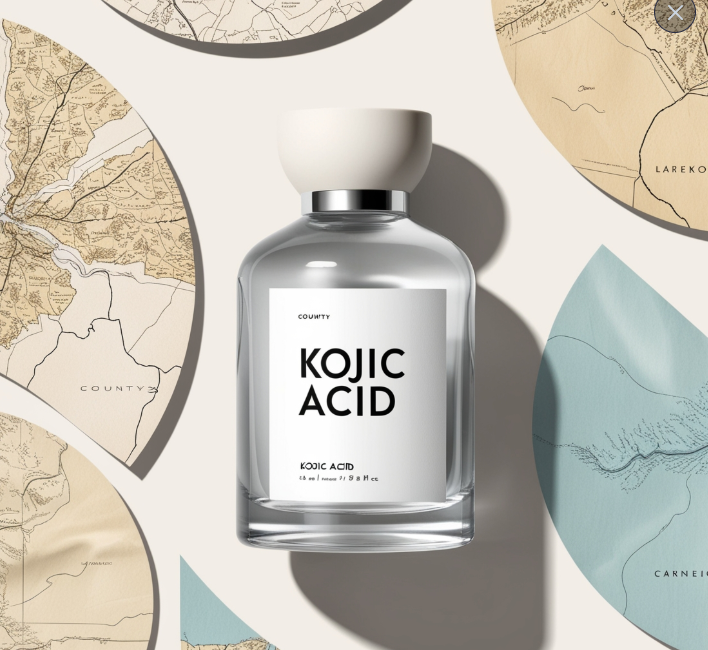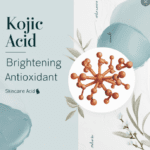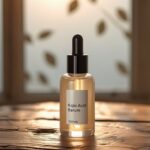- Kojic acid, first isolated in Japan, inhibits melanin production to effectively treat hyperpigmentation and dark spots.
-
Popular in Southeast Asia, especially in the Philippines and Thailand, it is a staple in daily skincare regimens.
-
In the U.S. and EU, kojic acid is widely used but regulated due to potential side effects like irritation.
-
South America, led by Brazil and Argentina, is seeing increased demand for kojic acid in skin-lightening products.
-
Globally, its natural origins and gentle action position it as a safer alternative to harsher chemicals like hydroquinone.
-
Kojic acid’s brightening and antioxidant properties make it valuable in both cosmetic and pharmaceutical applications worldwide.
Kojic acid has earned a global reputation for its remarkable skincare benefits. Known for its ability to lighten hyperpigmentation, dark spots, and acne scars, this ingredient works by reducing melanin production in the skin. Originally discovered in Asia, kojic acid quickly became a staple in various skincare products like soaps, creams, and serums. Its popularity as a safer alternative to hydroquinone has cemented its place in beauty regimens worldwide.
Kojic Acid: Uses, Benefits, Side Effects
Kojic acid is commonly used in skin-lightening products across the United States, Europe, and beyond. Its primary mechanism involves inhibiting tyrosinase, an enzyme responsible for melanin production. This has made it a popular choice in products designed to address dark spots, melasma, and post-inflammatory hyperpigmentation.
Interestingly, kojic acid’s utility extends beyond the cosmetic aisle. It is incorporated into some dental care products for its antimicrobial properties, contributing to oral hygiene. In medical applications, it plays a role in treatments for skin conditions like melasma and sunspots.
Despite its wide-ranging benefits, kojic acid’s safety has raised some concerns. Prolonged use or high concentrations can potentially cause skin irritation or heightened sensitivity. Consequently, regulatory bodies in some regions have imposed restrictions on its use, limiting the concentration permitted in over-the-counter formulations.
Japan: The Origin of Kojic Acid
Kojic acid has its roots in Japan, where it was first isolated in 1907 during the fermentation of rice in sake production 1 . The byproduct quickly drew attention for its unique ability to lighten skin by inhibiting melanin production. In Japan, , kojic acid became a groundbreaking ingredient in the skincare industry.
Initially, it was celebrated for its effectiveness in treating hyperpigmentation, dark spots, and discoloration caused by sun exposure or aging. Its natural origins and proven results made it a staple in Japanese beauty regimens. As demand grew, kojic acid was formulated into a variety of products, including creams, soaps, and serums.
Today, kojic acid remains a cornerstone of Japanese skincare innovation. It is valued for its gentle yet effective approach to skin brightening. Although its influence has spread globally, its origin in Japan continues to symbolize the blend of tradition and modernity.
Southeast Asia: Widespread Adoption
Kojic acid is a household name in Southeast Asia, especially in the Philippines and Thailand. Known for its ability to address sun damage, dark spots, and age-related discoloration, kojic acid is a trusted ingredient in over-the-counter skin-lightening products.
In these countries, harsh sun exposure often leads to hyperpigmentation. This makes kojic acid-based products essential in many beauty routines. Kojic acid soaps, creams, and lotions are widely available and marketed for daily use. The products promise brighter, more even-toned skin with consistent application.
Local brands have embraced kojic acid, creating affordable and accessible formulations tailored to tropical climates. These products often combine kojic acid with moisturizing or soothing ingredients to counteract potential dryness and irritation.
Everything you Should Know About Kojic Acid in Skincare
United States: Cosmetic Industry Usage
In the U.S., kojic acid is a popular ingredient in creams and serums targeting hyperpigmentation, melasma, and post-acne marks 2 . It is often paired with other actives, such as hydroquinone or retinoids, for enhanced skin-brightening effects. However, safety concerns have prompted scrutiny, resulting in varying regulations compared to other regions. Despite this, it remains widely available in formulations with carefully monitored concentrations.
European Union: Regulatory Challenges
The European Union enforces strict regulations on kojic acid due to concerns about potential side effects. These restrictions have limited its use in cosmetics, making many kojic acid products unavailable. Brands operating within the EU often replace kojic acid with alternative skin-lightening agents to meet regulatory compliance.
Australia: Limited Availability
In Australia, high concentrations of kojic acid are prohibited in cosmetics due to similar safety concerns as those raised in the EU. Products containing kojic acid are still available, but only in lower concentrations approved by regulatory bodies. As a result, consumers often turn to alternative ingredients or imported products to achieve skin-lightening results.
South America
countries like Brazil and Argentina are witnessing a rising demand for skin-lightening products, including kojic acid formulation 2. These products target common skin concerns like dark spots, uneven tone, and hyperpigmentation .
Kojic acid-based creams, serums, and lotions are marketed as effective solutions for achieving a brighter, more radiant complexion. Their appeal lies in their ability to deliver visible results, making them a go-to option for consumers prioritizing smooth, even skin.
With a growing focus on skincare in the region, the availability of kojic acid products is expanding.
Global Trends: Increasing Popularity
The global shift toward natural and plant-based ingredients in skincare has boosted the popularity of kojic acid 3. As a naturally derived compound, it aligns with consumer preferences for clean, sustainable, and safer alternatives to harsh chemicals like hydroquinone.
In many markets, brands highlight kojic acid’s gentler profile and multi-functional benefits, catering to the rising demand for effective yet skin-friendly solutions. Its global presence continues to grow as consumers increasingly prioritize ingredients that combine efficacy with safety.
Tags
- Kojic Acid Uses
- Kojic Acid Around the World
- Kojic Acid Benefits
- Global Kojic Acid Applications
- Kojic Acid Skincare
- Kojic Acid Products

I’m a devoted organic skincare enthusiast, passionate about the natural, wholesome goodness that organic products bring to our skin.
Organic skincare isn’t just a hobby for me—it’s a lifestyle. Every product I use, recommend, and write about has been carefully chosen for its purity and effectiveness. Everything I write about is backed by scientific studies, dermatologists’ opinions, and user experiences.
I also excel at tackling skincare challenges with innovative, organic solutions.


